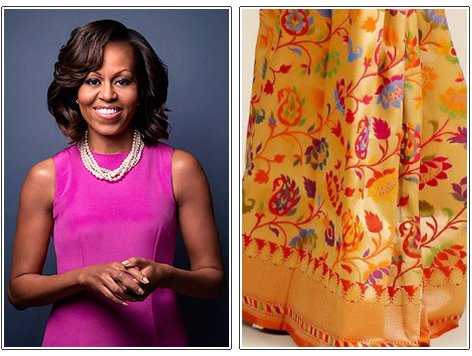Banarasi Saree - One Of The Most Admired And Elegant Handicraft
.jpg)
Since the last few centuries, Varanasi is a major handicraft and textile centre renowned for its fine craftsmanship. Banarasi sarees is among the finest and most well crafted sarees in India that are traditionally woven in Varanasi. Banarasi sarees are made in various fabrics cotton, silk, organza, tissue, kota masuria and georgette. Banarasi weaves are primarily famous for the exquisite silk sarees with luxurious Zari borders.
Famed for their luminous textures, magnificent brocades with engravings-like effect jewel hues; gorgeous zari highlights dipped sumptuously in centuries of culture the Banarasi are unmatched fabrics. They were initially crafted only on handlooms and are hand-woven. The labour-intensive processes involved in weaving, and the use of high quality raw materials coupled with special, secret weaving techniques ensure that Banarasi are prized, exquisite weaves. Today, brocades and Banarasi are made with varieties of base materials and newly improvised ways, including using power-looms, bringing down the costs for the end customer should one be willing to trade the new-age versions for the old-world charm of the hand-woven beauties.
The Banarasi sarees have a long association with Indian history and have been mentioned in the epic Mahabharata as well as some Buddhist scriptures. Originally, they were the attire of royalty and were crafted from real silver and gold threads. They were made in almost as long as a year. Though the art of making these sarees has been practised in India since time immemorial, it was Mughal emperor Akbar who gave the Banarasi saree its shot to fame. Owing to his love for finer and luxurious things, he had many of his wives dressed in rich silk sarees with zari work that are popularly referred to as Banarasi sarees. He even had carpets and wall hangings made from Banarasi silk and hung them all over his palace.
The process of crafting a Banarasi saree is an intricate and time-consuming one. Firstly, metal strips are drawn from gold alloys and then flattened using machines. Then, they are passed through a brightener to increase their sheen. Later on, these threads are used to create motifs on the silk sarees that are dyed in various colours. The designs to be put on a saree are created on paper i.e. they are literally punched into the paper and resemble a Braille script. Hundreds of such patterns (naksha patras) are created for one saree. These patras can be floral motifs or jali work. The sarees can take from 15 days to a month to be made. In some cases, they also take as long as six months.

Banarasi Sarees have acquired an iconic stature globally too. It’s an ethnic symbolism that has well and truly travelled the world. From international celebrities to politician and style high brows, everyone seems to be enamored by this grandiose Indian statement. The reigning Indian Prime Minister Narendrabhai Modi (knowing Michelle Obama’s preference for the magnificent weave) had famously gifted a bespoke, hand-made Kadhua* Banarasi silk sari to the erstwhile first lady (of the US), on her visit to India. Rumors say that the total number of saris gifted was way higher, but let’s rest the matter there – taking pride in the majestic weave’s celebrated patrons and travels.
A genuine Banarasi silk saree can be bought for anywhere from $150 to $6790+ depending on the design and the intricacy of the work.



.jpg)



.jpg)




